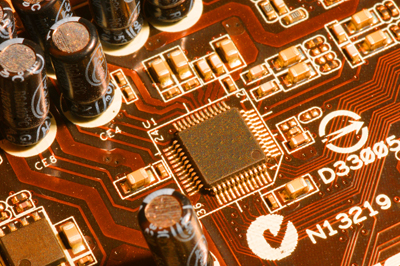By C. Todd Lopez
WASHINGTON (March 03, 2022) -- Earlier this year, the Defense Department's chief technology officer, Heidi Shyu, released a list of 14 technology areas deemed most critical for investment, including biotechnology, advanced materials, trusted artificial intelligence and microelectronics.
A handful of products related to those focus areas -- such as hypersonics and directed energy weapons -- are almost exclusively military-related, but the majority are already being developed for the commercial market by private companies that may not have done business with the federal government. Those innovations include next-generation wireless communications, microelectronics, and human-machine interfaces.

For DOD to have its needs addressed by the private sector with or without DOD involvement, the department will need to do a better job of engaging with those companies.
DOD's Defense Innovation Unit is one segment of the government already on board with locating companies involved in the development of critical technologies and helping them become suppliers.
"We're really trying to look at what all of the innovative companies are doing around the country ... because most of what we need to do to modernize the Defense Department is led by industry now; it's commercial technologies," Mike Brown, director of the DIU, said during a discussion Wednesday at George Mason University's Center for Government Contracting in Northern Virginia.
"We have to be harnessing what the private industry is doing if we're going to be giving our warfighters the capability that they need," Brown said.
DIU, Brown said, has been working to accelerate adoption of commercial technology using "other transaction authority," which is different from classic procurement contracts and is instead used for things like research or prototyping.
The approach DIU uses is called "commercial solutions open," and Brown said this includes things like agile work statements, modular contracts and working at commercial speeds.
"We don't start with requirements, which often dictates how the department might start to bring in a new capability -- a process that's well-honed if you're going to build a new aircraft or tank," Brown said. "If you're going to look at commercial technology, you don't need to start with requirements. The commercial market has already built that."
When DIU was looking at counterdrone technologies, Brown said, it didn't need to specify requirements because the commercial market had already developed things DOD could use.
With modular contracts, he said, comes the flexibility to bring in different vendors and have them work together and go from a successful prototyping effort directly into production.
Finally, modular contracts can limit the challenging requirements for intellectual property that might delay the transition of a capability from the private sector into warfighter hands, he said.
"We're trying to get companies on contract in 60 to 90 days, in commercial terms -- that means no onerous IP [intellectual property] requirements for companies that we work with," Brown said.
Budgeting is also an issue, Brown said. Traditional budgeting requires planning as much as two years in advance before dollars can be spent.
"That's not the agile process we need to compete with China in technology," he said. "We need to be able to move not the whole $750 billion defense budget, but we need some flexibility at the edges to respond to emerging threats and plug in new commercial technology solutions that address those threats.
The Commission on Planning, Programming, Budgeting, and Execution Reform, as directed in the 2022 National Defense Authorization Act, is looking now at better solutions to budgeting so that the department can be more agile in the technology it procures. That's something Brown said he's glad to see.